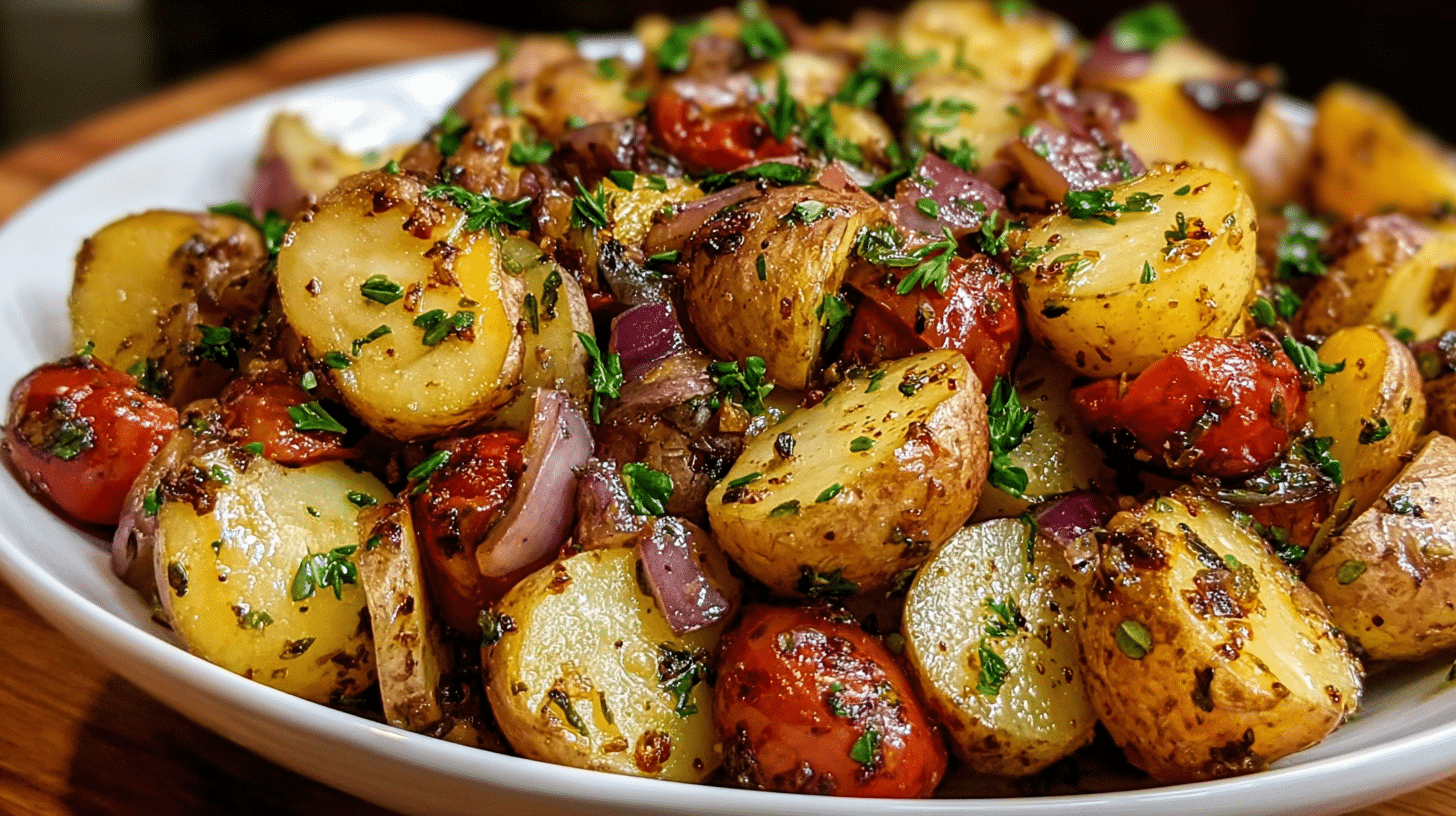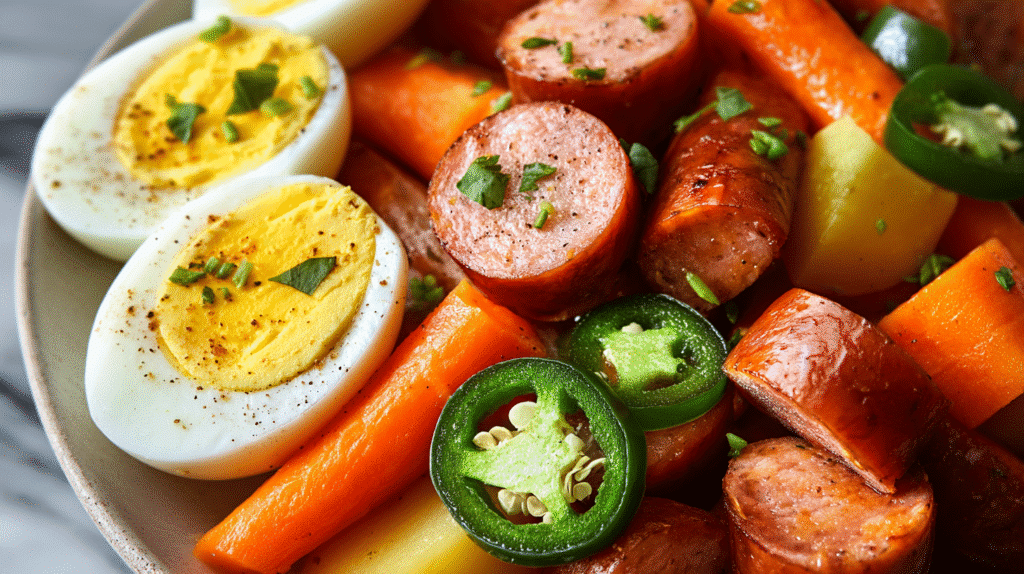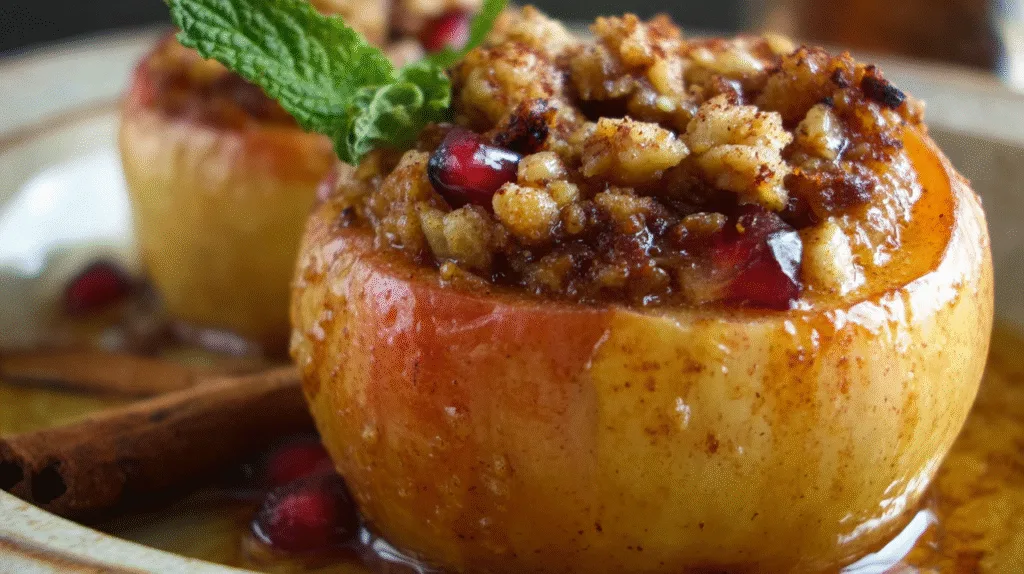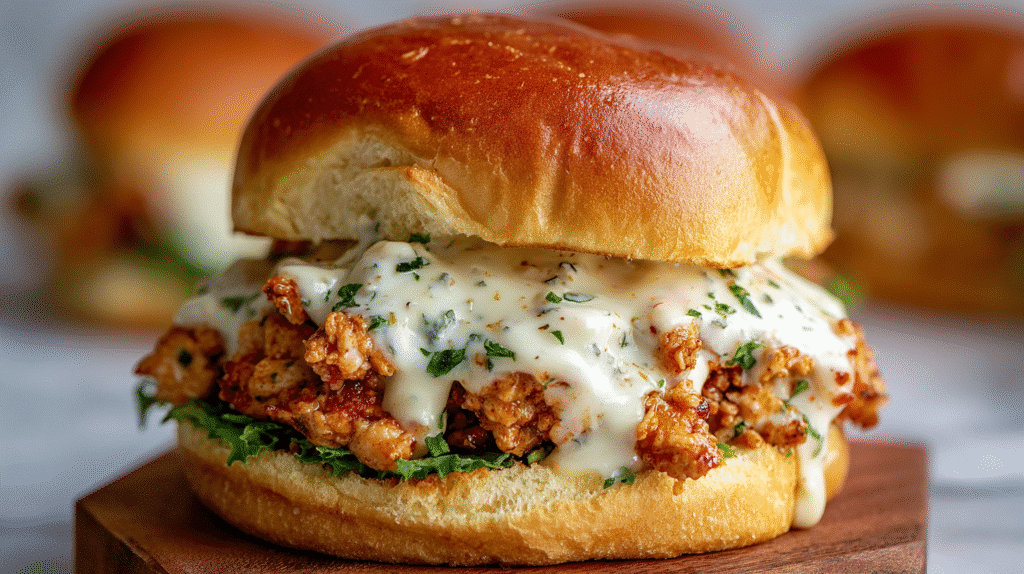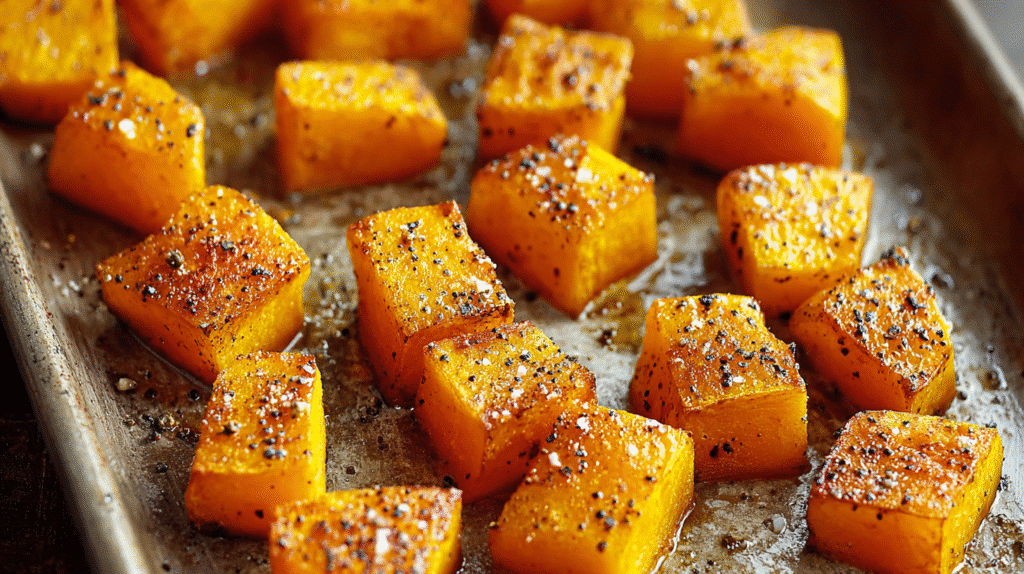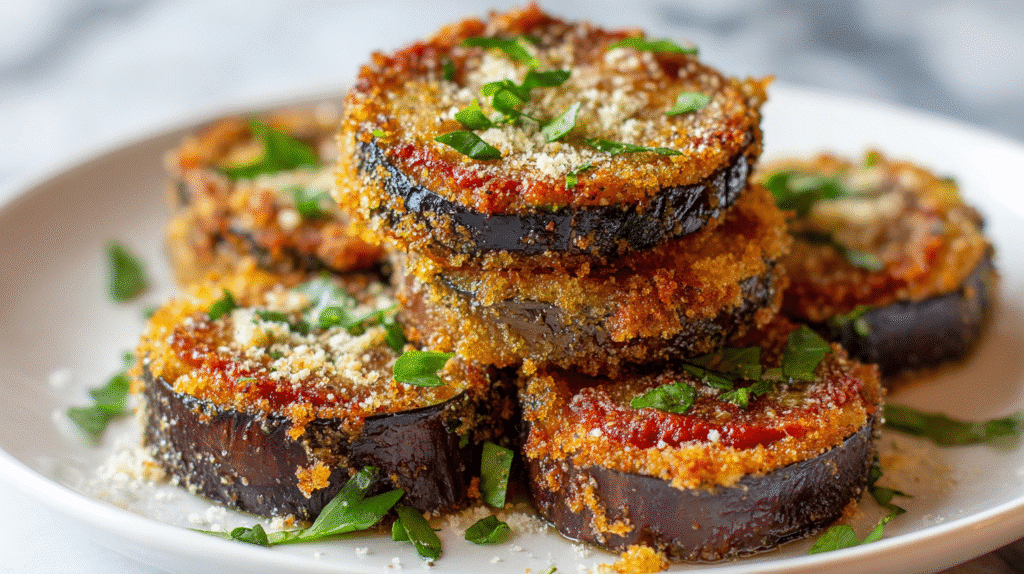Balsamic Potato Salad
Introduction: Why Balsamic Potato Salad Is the No-Mayo Side You’ll Make on Repeat
If you’ve ever craved a potato salad that’s light yet still bursting with flavor, you’re in for a treat. Balsamic potato salad ditches the heavy mayo and instead leans into tangy, slightly sweet notes from a simple vinaigrette. Imagine tender potatoes soaking up that glossy dressing, brightened with herbs and balanced with just the right hit of garlic or Dijon. Oh, and did I mention? You can serve it warm, chilled, or somewhere in between—it’s flexible like that.
The real beauty of this recipe is its versatility. Whether you’re whipping it up as a side dish for weeknight dinners, prepping for a summer picnic, or dressing it up with Mediterranean add-ins for a fancier spread, this salad does it all. Plus, it stores well and travels even better. In the next sections, we’ll explore every angle, from choosing the right spuds to nailing that perfect dressing ratio.
What Is Balsamic Potato Salad? (How It Differs from Classic)
Definition & Flavor Profile
Balsamic potato salad is exactly what it sounds like—potatoes tossed in a tangy-sweet balsamic vinaigrette instead of mayonnaise. The result? A lighter salad with a glossy finish and a flavor that’s both rustic and sophisticated.
Balsamic vs. Mayo-Based Potato Salad
Traditional potato salads are creamy, dense, and often overshadow the potato itself. By contrast, a balsamic version celebrates the spud’s natural flavor. The vinaigrette seeps into warm potatoes, giving every bite a balanced zing of acid, a whisper of sweetness, and a pop of fresh herbs. Unlike mayo-based versions, it also feels less heavy, making it perfect for hot weather gatherings or anyone looking for a lighter twist.
And here’s the kicker: balsamic vinegar isn’t just any vinegar. It’s an aged, concentrated, deeply flavored staple, with roots dating back centuries in Italy. (Want to learn more about the different types of balsamic vinegar?)
Choose the Right Potatoes (Texture, Cut & Prep)
Best Varieties (Red, Yukon Gold, Baby)
If you want potatoes that hold their shape after cooking, go with red potatoes, Yukon Gold, or even baby potatoes. These waxy varieties stay firm, soak up dressing like a sponge, and don’t turn into mush when tossed. Starchy potatoes like russets? Skip them. They fall apart too easily and can leave your salad looking more like mashed potatoes in disguise.
Cut Size, Peel vs. No Peel
Smaller, evenly sized chunks cook more uniformly, making your salad easier to eat. Baby potatoes are excellent because you can halve or quarter them and be done. As for peeling—leave the skins on for extra color, fiber, and rustic charm. Plus, they add a subtle earthy note that complements balsamic beautifully.
Seasoning While Warm for Maximum Absorption
Here’s a pro tip: always dress your potatoes while they’re still warm. Warm spuds act like sponges, pulling in that tangy vinaigrette so the flavor goes all the way through. Wait until they’re cold, and the dressing just coats the outside.
Quick Tip: Avoiding Mushy Potatoes
Don’t overcook! Test with a fork—when it slips in easily but the potato still feels firm, you’re golden. After draining, let them steam-dry in the colander for a few minutes; this prevents soggy salad later.
Balsamic 101 for Potato Salad
Types: Traditional (PDO), Modena (PGI), & White Balsamic
-
Traditional balsamic (PDO): Thick, syrupy, and aged for years. It’s luxurious but pricey—best saved for drizzling.
-
Balsamic of Modena (PGI): Affordable, tangy-sweet, and perfect for everyday potato salads.
-
White balsamic: Lighter in color and flavor. It won’t stain your potatoes dark, making it ideal for a fresher, brighter look.
Which Balsamic to Use (Cost, Sweetness, Color)
For everyday balsamic potato salad recipes, a mid-range PGI balsamic does the trick. It offers balance without being overpowering or breaking the bank.
Balsamic Glaze vs. Vinegar (When to Use Each)
A balsamic glaze is thicker and sweeter, more like a finishing sauce. Regular balsamic vinegar is lighter and sharp—perfect for vinaigrettes. Use glaze for a drizzle on top, but the base dressing should come from vinegar.
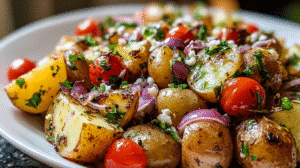
The Dressing Formula (Balanced, Glossy, Emulsified)
Base Ratio (About 3:1 Oil to Acid; When to Go 2:1)
A classic vinaigrette calls for three parts oil to one part vinegar. But because balsamic is naturally sweet, you can lean closer to a 2:1 ratio if you like it punchier.
Emulsifiers (Dijon/Mustard Powder)
Add a spoonful of Dijon mustard or a sprinkle of mustard powder. This helps keep your dressing emulsified, so oil and vinegar don’t separate.
Sweet Balance (Honey/Maple/Sugar)
Sometimes balsamic needs a little backup in the sweetness department. A dash of honey or maple syrup rounds things out. Don’t overdo it—you want tangy-sweet, not dessert-level sweet.
Aromatics (Garlic/Shallot)
Finely minced garlic or shallots add depth and make the salad taste restaurant-worthy.
Seasoning & Optional Heat
Salt and freshly cracked black pepper are essential. A pinch of chili flakes gives a gentle kick without overpowering the herbs.
Step-by-Step: Boiled Balsamic Potato Salad
-
Prep & Chop: Cut red or Yukon Gold potatoes evenly.
-
Boil in Salted Water: Cook until tender but firm.
-
Drain & Steam-Dry: Prevent soggy potatoes.
-
Dress While Warm: Toss gently with vinaigrette.
-
Rest to Marry Flavors: Let sit 10–20 minutes.
-
Taste & Adjust: Add more oil, salt, or fresh herbs as needed.
For more tips on potato preparation, check out our easy mashed potato techniques guide.
Step-by-Step: Roasted Balsamic Potato Salad
-
Preheat oven to 425°F (220°C).
-
Toss halved baby potatoes with olive oil, salt, and pepper.
-
Roast 25–30 minutes until crisp-tender.
-
Add onions, peppers, or mushrooms halfway through.
-
Toss hot potatoes with vinaigrette and herbs.
-
Serve warm or at room temperature.
Want to explore more roasted vegetable ideas? See our oven-roasted vegetable recipes.
Variations & Add-Ins
-
Caprese Style: Cherry tomatoes, mozzarella, basil
-
Mediterranean Pantry: Olives, capers, sun-dried tomatoes
-
Smoky Bacon + Arugula
-
Vegan & Dairy-Free
-
White Balsamic + Fresh Herbs
-
Dijon-Forward
-
Honey/Maple Balsamic
-
Protein Boost: Chicken, tuna, or beans
-
Crunch Elements: Toasted nuts
For a twist on herby salads, check out our garlic butter potato bites recipe.
Make-Ahead, Storage & Food Safety
-
Make ahead same day or overnight for deeper flavor
-
Airtight fridge storage: 3–4 days
-
Picnic rule: 2 hours at room temp, 1 hour if hot
-
Refresh with extra vinaigrette before serving
Serving Ideas & Pairings
-
Proteins: Grilled chicken, rotisserie turkey, baked salmon
-
Presentation Tips: Spread on platter, fresh herbs, drizzle glaze
-
Scaling: ½ pound potatoes per person
Nutrition Notes
-
Light Yet Satisfying: Complex carbs + healthy fats
-
Sodium/Acidity: Adjust with lightly salted water or white balsamic
Troubleshooting
-
Too Tangy: Add more oil or a teaspoon honey
-
Bland: Season while warm
-
Mushy Potatoes: Don’t overcook
-
Dressing Split: Whisk or add Dijon
-
Dry After Chilling: Re-dress lightly
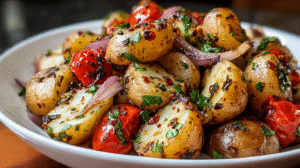
FAQs
-
Can you put balsamic vinegar in potato salad? Yes, it adds tangy sweetness.
-
Best potatoes? Waxy types: red, Yukon Gold, baby
-
Warm or cold? Both work depending on occasion
-
White balsamic instead of dark? Yes, milder and lighter in color
-
Make without mustard? Yes, optional
-
Honey/maple alternatives? Agave syrup or brown sugar
-
Fridge life? 3–4 days
-
Gluten-free? Yes
-
Add protein? Chicken, tuna, beans
Conclusion
There you have it—balsamic potato salad in all its tangy, herby glory. From picking the perfect potatoes to crafting a balanced vinaigrette, every step elevates what could otherwise be an ordinary side. Add herbs, caprese-style ingredients, crunchy nuts, or proteins for a meal all on its own. Easy to prep, fridge-friendly, and endlessly adaptable, it’s a side dish that steals the show. Check out more lunch recipes for inspiration and complementary dishes to serve alongside.

